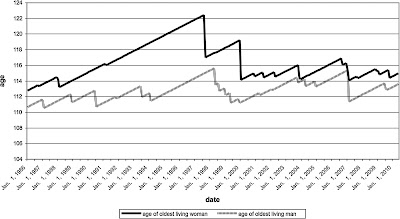Hibiscus Tea Increases HDL, Lowers LDL and Triglycerides

Hibiscus tea is often served cold with sugar. (Photo by molossoidea)
When it comes to health benefits and drinks, green tea gets most of the publicity. And with good reason – from what we know, it seems to have the widest range of positive effects out of all beverages. But that's not to say that there aren't other less known drinks out there that have health benefits of their own.
One such beverage is hibiscus tea, a herbal infusion made from the calyces of the Hibiscus sabdariffa flower. Hibiscus is also known as sorrel, roselle, karkadé and flor de Jamaica, depending on the region. Earlier this year, I wrote about two studies showing that hibiscus tea reduces blood pressure. In the second study, hibiscus tea was compared with black tea, and guess what – hibiscus tea wone hands down.
In fact, the group that drank black tea saw an increase in blood pressure. That was black tea – as far as I know, there have been no direct comparisons between green tea and hibiscus tea, but even green tea's effects on blood pressure seem to be small or nonexistent. So green and black tea, while very healthy, may not be enough if you want to cover all bases.
I wrote in the earlier posts that to my knowledge, there had been no studies on hibiscus tea and cholesterol, even though the drink is traditionally used to lower cholesterol. Today, however, I found a paper that shows hibiscus tea is good for cholesterol too (link). Granted, the paper appeared in the Journal of alternative and complementary medicine, which has published some papers that seem to be of questionable quality, but this one seems pretty legit.
For the experiment, 60 patients with type II diabetes were randomly assigned into two groups. One group got black tea and the other got hibiscus tea (which the authors refer to as "sour tea"). The participants were told to drink one glass (1 tea bag in boiling water, steeped for 20-30 minutes) twice a day for a month.
The subjects that drank black tea did not show improvement in any of the parameters measured. None of the changes in total cholesterol, LDL, HDL, triglycerides and lipoprotein (a) were statistically signifcant.
Those who drank hibiscus tea, on the other hand, saw several improvements in their cholesterol levels. Total cholesterol went from 236.2 to 218.6 mg/dL. HDL increased from 48.2 to 56.1 mg/dL, while LDL decreased from 137.5 to 128 mg/dL. Triglycerides went down rather dramatically, from 246.1 to 209.2 mg/dL. Lipoprotein (a) was unchanged.
The authors also reference several other papers showing similar results in humans and animals. For example, one study showed a reduction in cholesterol levels in healthy men and women taking a hibiscus extract (link). This would suggest that the beneficial effects of hibiscus are not only limited to diabetic patients.
I'm not sure why I didn't find these papers the last time I did a pubmed search, but I'm glad I came across them now. I guess it's time to put hibiscus tea back on the menu, next to green tea and rooibos tea.
My favourite way to drink it is to make a big glass of hibiscus tea the normal way, then after 15 minutes of steeping pour the tea through a sieve into a larger container, add twice as much cold water and put it in the fridge. It's ready to drink in about an hour. It's especially good in the summer, best enjoyed with ice and a little sugar for taste.
For more information on tea, cholesterol and health, see these posts:
The Many Health Benefits of Rooibos Tea
Black Tea Is More Effective in Activating Superoxide Dismutase (SOD) than Green Tea
Refined vs Red Palm Oil and Cholesterol
Anthocyanins from Berries Increase HDL and Lower LDL
Read More......








